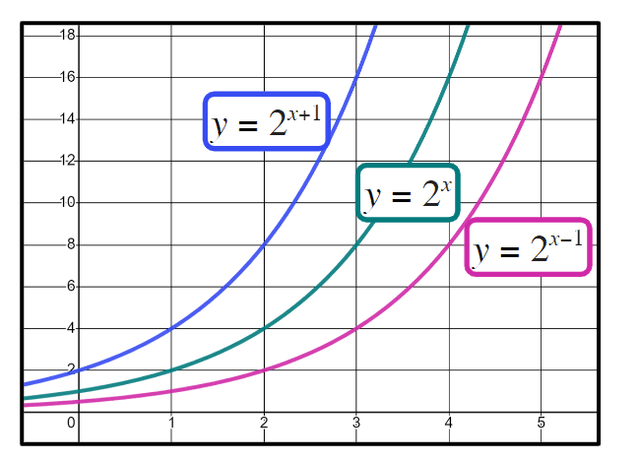Myths about teaching can hold you back


- Year 9
Graphing special number sequences using technology
I can plot the graph of a special number sequence.


- Year 9
Graphing special number sequences using technology
I can plot the graph of a special number sequence.
These resources were made for remote use during the pandemic, not classroom teaching.
Switch to our new teaching resources now - designed by teachers and leading subject experts, and tested in classrooms.
Lesson details
Key learning points
- Visual representations of a sequence can help with identification.
- Special number sequences can produce interesting graphs.
Keywords
Triangular number - A triangular number (or triangle number) is a number that can be represented by a pattern of dots arranged into a triangle.
Common misconception
Pupils may think that given a graph is continuous, the sequence can contain all of the values represented by the line.
It is important that pupils know when it is appropriate to draw a line to graph sequences and whether values on the line have any meaning. Sequences are often given as a list of terms and without context we cannot assume the sequence is continuous.
To help you plan your year 9 maths lesson on: Graphing special number sequences using technology, download all teaching resources for free and adapt to suit your pupils' needs...
To help you plan your year 9 maths lesson on: Graphing special number sequences using technology, download all teaching resources for free and adapt to suit your pupils' needs.
The starter quiz will activate and check your pupils' prior knowledge, with versions available both with and without answers in PDF format.
We use learning cycles to break down learning into key concepts or ideas linked to the learning outcome. Each learning cycle features explanations with checks for understanding and practice tasks with feedback. All of this is found in our slide decks, ready for you to download and edit. The practice tasks are also available as printable worksheets and some lessons have additional materials with extra material you might need for teaching the lesson.
The assessment exit quiz will test your pupils' understanding of the key learning points.
Our video is a tool for planning, showing how other teachers might teach the lesson, offering helpful tips, modelled explanations and inspiration for your own delivery in the classroom. Plus, you can set it as homework or revision for pupils and keep their learning on track by sharing an online pupil version of this lesson.
Explore more key stage 3 maths lessons from the Non-linear relationships unit, dive into the full secondary maths curriculum, or learn more about lesson planning.

Licence
Prior knowledge starter quiz
6 Questions
Q1.Which of these are square numbers?
Q2.Which of these are cube numbers?
Q3.Which of these are triangular numbers?
Q4.Which of these is the $$n^{\text{th}}$$ term rule for the linear sequence 6, 10, 14, 18, ...?
Q5.Sam draws a graph of this geometric sequence. Which of these coordinates should Sam plot?

Q6.Andeep plots the graph of the equation $$y=3.4x-10$$. When the $$y$$ coordinate is $$75$$, the $$x$$ coordinate is .
Assessment exit quiz
6 Questions
Q1.The sequence with $$n^{th}$$ term $$5.6n + 12$$ is graphed in the diagram. Is 40 a term in the sequence?
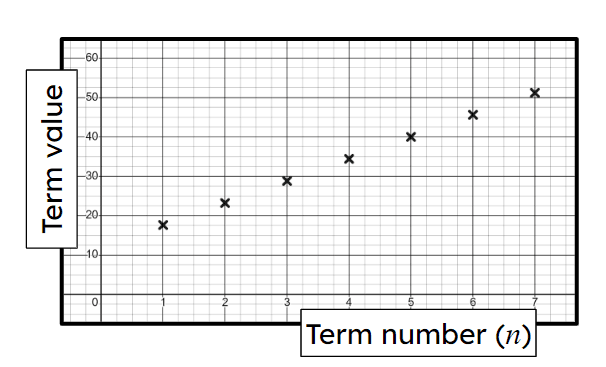
Q2.The 4th term in the sequence $$3\times 5^{n-1}$$ is . Use Desmos or the diagram to help you.
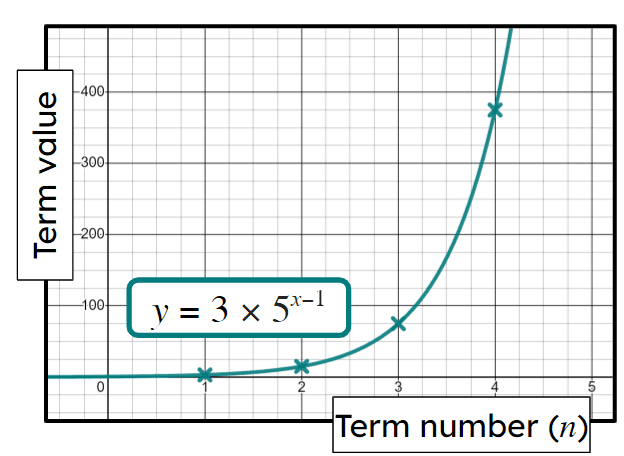
Q3.Is the number 654 in the sequence with $$n^{\text{th}}$$ term rule $$n^3$$? Use Desmos or the diagram to help you.
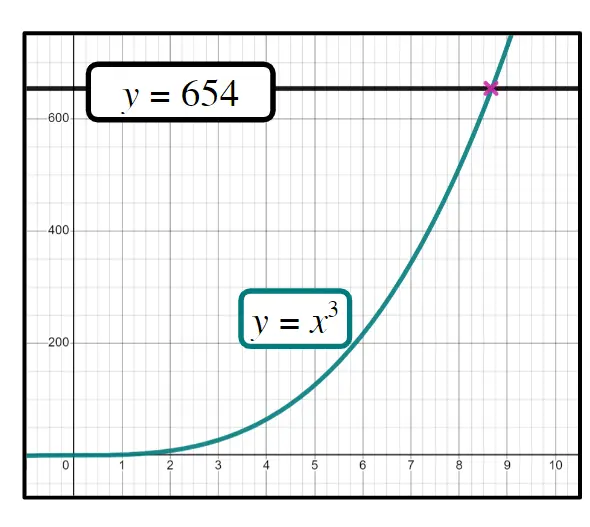
Q4.Why does this diagram not represent the sequence of all square numbers in ascending order?

Q5.This graph shows the sequence of triangular numbers and the sequence $$4n +4$$ (the line and curve are drawn to help you). Which of these statements are true?
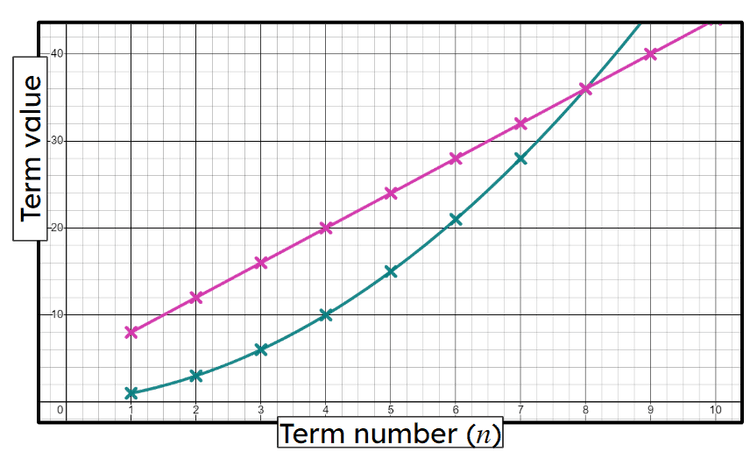
Q6.Which is the correct $$n^{\text{th}}$$ term rule for the geometric sequence which starts 1, 2, 4, 8, 16, ...?
